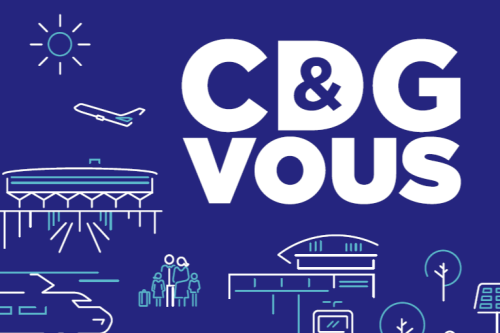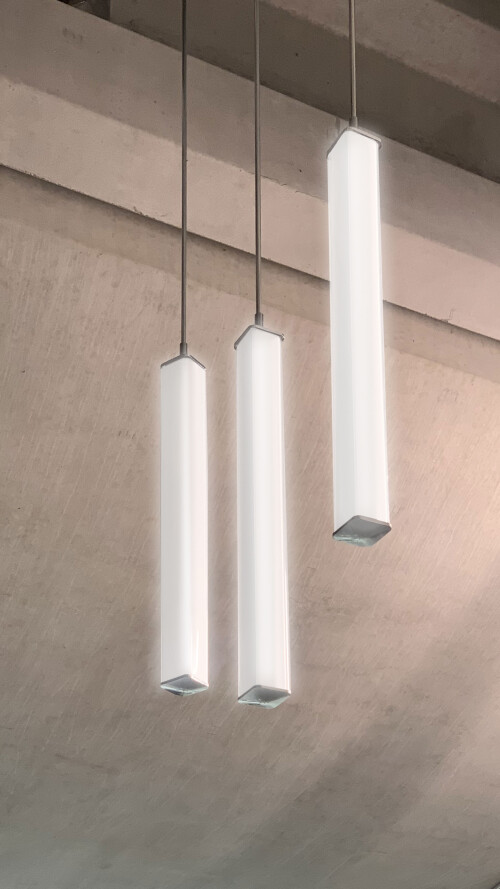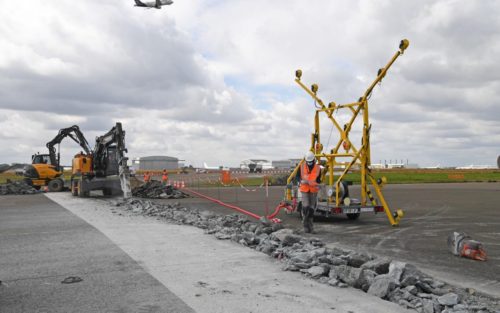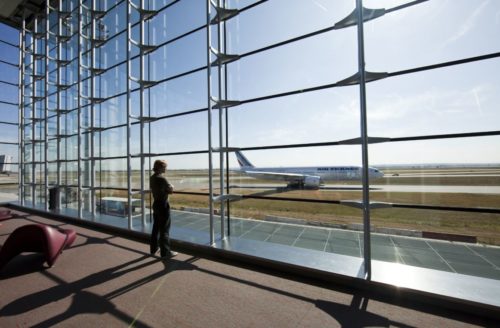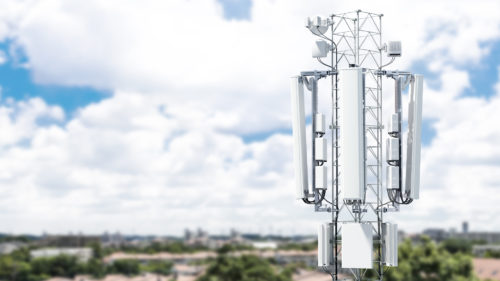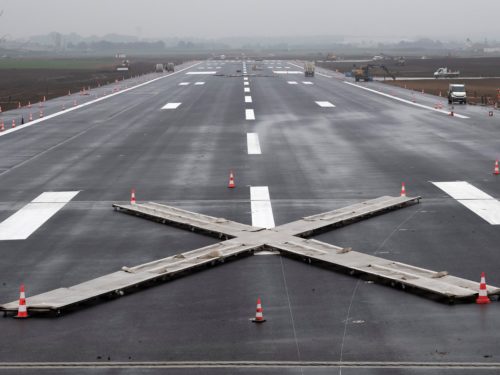Groupe ADP is opening a new 6,000 sq.m building in Hall 1 of the West Terminal.
This expansion, equipped with four new pier-served stands for medium-haul aircraft, will increase the terminal's aircraft capacity. This new infrastructure, made necessary by the regular increase in number of passengers at Paris-Orly, will improve service by increasing the size of the boarding and deplaning areas, and will increase capacity in Hall 1 from 4.8 to 5.5 million passengers per year.
This expansion, equipped with four new pier-served stands for medium-haul aircraft, will increase the terminal's aircraft capacity. This new infrastructure, made necessary by the regular increase in number of passengers at Paris-Orly, will improve service by increasing the size of the boarding and deplaning areas, and will increase capacity in Hall 1 from 4.8 to 5.5 million passengers per year.
“This new boarding area is just one part of a major transformation plan for Paris-Orly Airport. By 2020, the airport will have a totally new look and feel, thanks to improved quality of services and facilities as well as streamlined passenger experience,” said Régis Lacote, Paris-Orly Airport Managing Director.
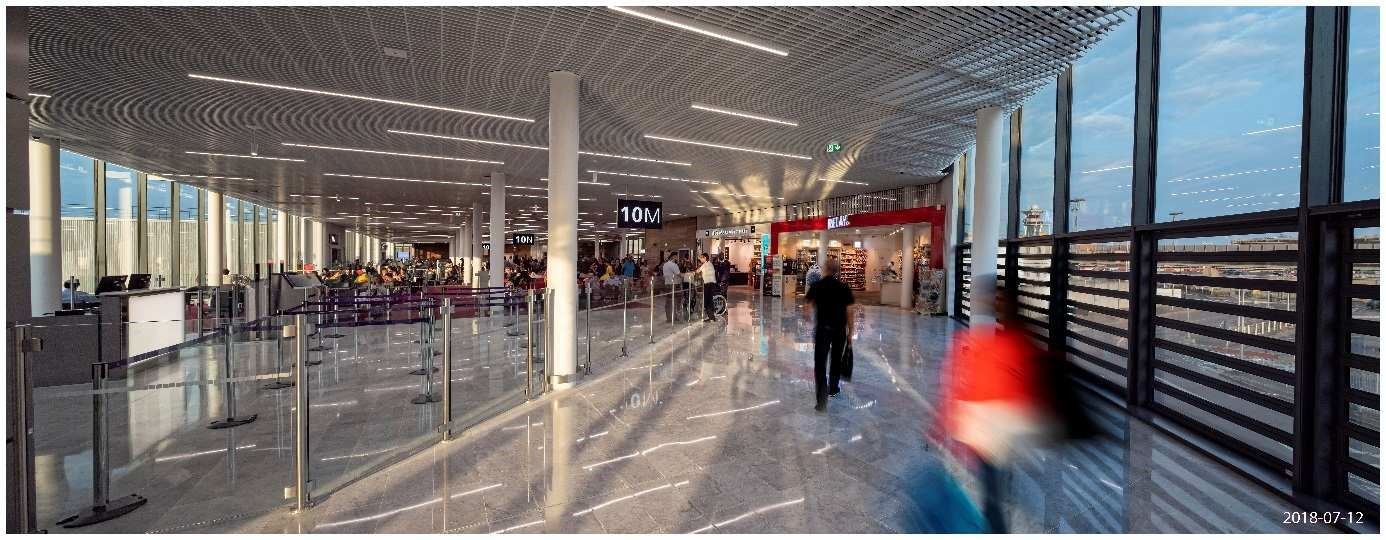
View from the boarding area of the Hall 1 extension at Paris-Orly Airport.
Faciliities and Services
The layout of the boarding area allows for a clearer separation of functions: marble flooring in the walking areas, carpeting around the seats and services, a main walking aisle wide enough (6 metres) to allow passengers to move easily from one end to the other.
For the hall's atmosphere and design, Groupe ADP used natural materials like wood wall panelling, and it considerably opened up the building to natural light, with a view over the aeroplanes.
To meet passengers’ needs and expectations, three new stores have been opened: a Relay boutique, a duty-free zone selling alcohol, tobacco, perfume and lifestyle products, as well as a Paul restaurant. In addition, a range of services is available in the boarding lounge: kids’ play areas, PlayStation games, phone-charging stations, a public piano, and an outdoor smoking terrace.
This hall is intended for passengers flying to Schengen destinations on the following airlines: HOP! Air France, Air France, Air Malta, Alitalia, Iberia, TAP and Vueling.
The layout of the boarding area allows for a clearer separation of functions: marble flooring in the walking areas, carpeting around the seats and services, a main walking aisle wide enough (6 metres) to allow passengers to move easily from one end to the other.
For the hall's atmosphere and design, Groupe ADP used natural materials like wood wall panelling, and it considerably opened up the building to natural light, with a view over the aeroplanes.
To meet passengers’ needs and expectations, three new stores have been opened: a Relay boutique, a duty-free zone selling alcohol, tobacco, perfume and lifestyle products, as well as a Paul restaurant. In addition, a range of services is available in the boarding lounge: kids’ play areas, PlayStation games, phone-charging stations, a public piano, and an outdoor smoking terrace.
This hall is intended for passengers flying to Schengen destinations on the following airlines: HOP! Air France, Air France, Air Malta, Alitalia, Iberia, TAP and Vueling.
An eco-friendly building in line with CSR policy
On the environmental side, the entire building is equipped with LED lights, including in the hall, aircraft zones, runway and ground lighting; the indoor lighting is linked to intelligent management systems with presence and brightness sensors as well as timers; and the air handling units have variable speeds and an energy-saving system.
In terms of its social commitment, the project's main construction contracts included a social inclusion clause stipulating that 10,000 hours of work would be performed by underprivileged people (long-term job seekers, RSA recipients, etc.). This quota of hours was fully met.
On the environmental side, the entire building is equipped with LED lights, including in the hall, aircraft zones, runway and ground lighting; the indoor lighting is linked to intelligent management systems with presence and brightness sensors as well as timers; and the air handling units have variable speeds and an energy-saving system.
In terms of its social commitment, the project's main construction contracts included a social inclusion clause stipulating that 10,000 hours of work would be performed by underprivileged people (long-term job seekers, RSA recipients, etc.). This quota of hours was fully met.









